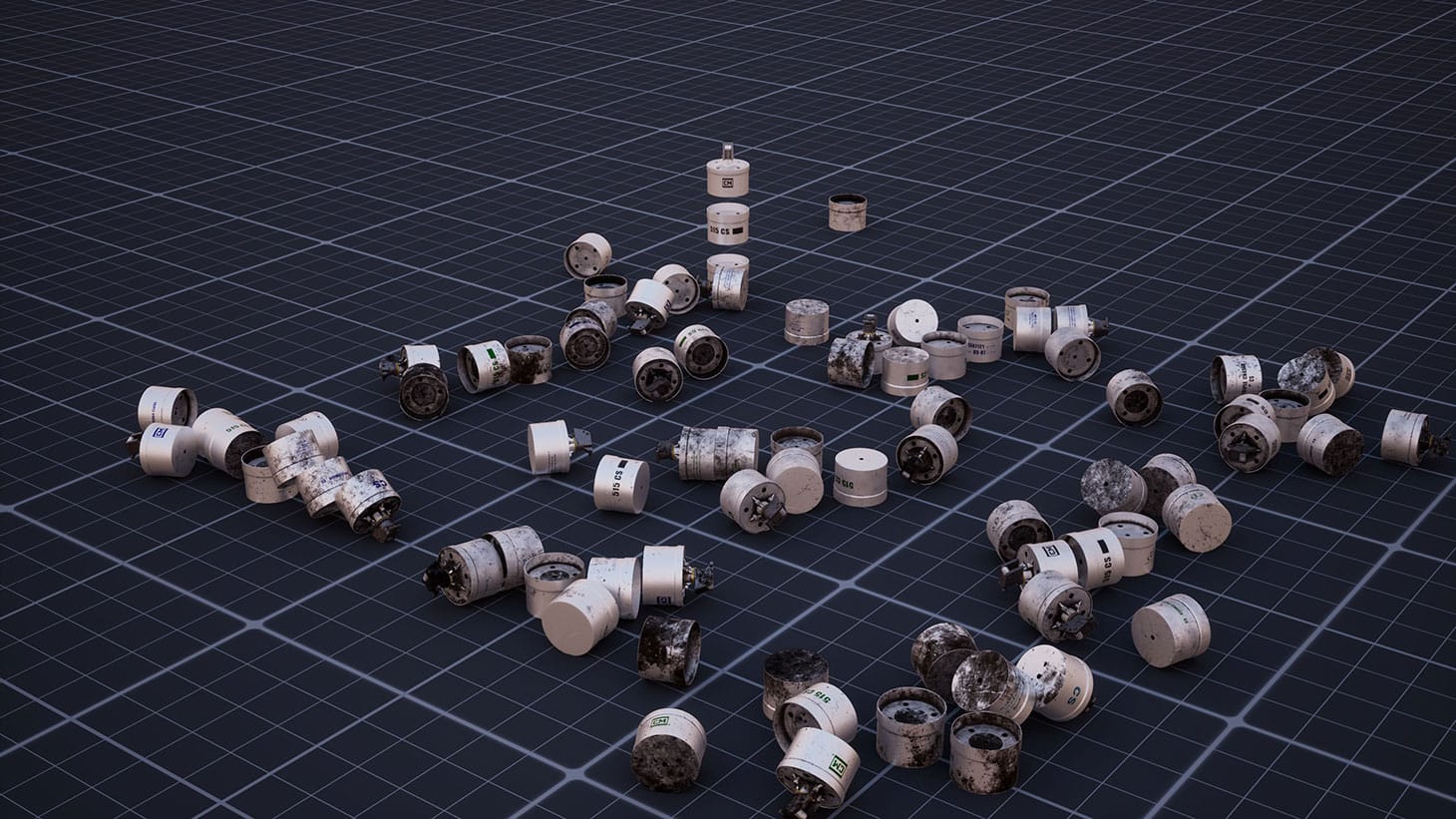Forensic Architecture Says Warren Kanders Is One Part of a Web of Possible War Crimes in Gaza
Members of the research group say their "Triple-Chaser" video at the Whitney Biennial is part of an ongoing investigation into violence at the Israeli-Palestinian border.

Think of the ten-minute video that Forensic Architecture unveiled at the 2019 Whitney Biennial more as a progress report than a capstone project. The London-based research group is far from finished with Warren Kanders, the vice chairman at the Whitney Museum of American Art who activists and researchers have accused of being complicit in alleged war crimes at the Israeli-Palestinian border.
Watch the film carefully and you might recognize some footage from last year’s “Great March of Return,” the name given to the string of protests across the Gaza Strip commemorating the 70th anniversary of the 1948 exodus of an estimated 700,000 Palestinians just months after the creation of Israel, called the Nakba. Those same scenes of a violent standoff between the Israeli military and Palestinian demonstrators were included in a 17-minute video produced by the New York Times in partnership with Forensic Architecture in December 2018 that investigated the fatal shooting of the volunteer medic Rouzan al-Najjar by Israeli gunfire.
Kanders is one star in a constellation of controversies that address Israel’s use of force against Palestinians at the Gaza border. “Given the sheer scale and brutality of violence and the horrendous nature of injuries, we’ve been asking what is different about the ammunition used during this protest,” said Robert Trafford, Forensic Architecture’s project coordinator for the investigation. “Because every Palestinian doctor we spoke to said that these aren’t normal bullets; this isn’t what we’ve come to expect.”
In February, the United Nations released a report that claimed Israeli security forces may have committed war crimes and should be held individually and collectively accountable for the deaths of 189 Palestinian protesters in Gaza last year. The report also confirmed what investigators had long expected: Israeli snipers had maimed thousands of demonstrators during the weekly protests along the border fence. High-velocity munitions that were supposed to be used from up to a kilometer away were being shot at targets as close as 200 meters.
Prime Minister Benjamin Netanyahu denounced the report, saying it “set a new record for UN hypocrisy” that was “based purely on an obsessive hatred of Israel.” The country’s foreign minister Israel Katz described the commission as farcical and biased against Israel; the government has described the protests as particularly violent and a possible cover for Hamas militants seeking to infiltrate Israel for attacks. But the UN commission said that only 29 of the dead could be clearly identified as members of the Palestinian armed factions.
A researcher with Forensic Architecture was at the border fence when gunfire erupted last year, and recently returned to London from a trip back to Gaza on the first anniversary of last year’s protests.
“What I saw in Gaza was a continuation of the same force the Israeli military used last year,” she said. “I saw people being hit by live ammunition, people collapsing from tear gas — older women, little kids holding flags, grown men.”
(Because the researcher investigates sensitive topics like the Israeli military’s weapons suppliers and their use of force on the Palestinian border, she has requested that her identity remain anonymous.)
The Jerusalem Post estimates that over 60 Palestinians were injured during demonstrations on May 16, 2019. The Israeli Defense Force (IDF) said around 10,000 Palestinians in several locations along the fence burned tires and threw stones and explosive devices toward troops. Palestinian media has reported that the IDF fired live bullets, tear gas, and skunk spray at protesters trying to damage the border fence with Israel.
A lawyer by trade and professor of political science, the Forensic Architecture researcher has worked in the Occupied Palestinian Territories for 15 years. More recently, she has been tasked with collecting evidence in Gaza — both in the form of ammunition rounds and eyewitness testimony. These two components were key for building the group’s biennial submission, “Triple-Chaser” (2019), a collaboration with documentary filmmaker Laura Poitras and Praxis Films.
“The strength of [this project] is that it draws a link between the metal and the bone,” she said. “This is an ongoing investigation, but we are in the process of finding links in Gaza to specific bullets that Kanders is producing.”
The researcher describes the framework of justifications that underpin the Israeli government’s use of force in Gaza as an unprecedented “fusing of legal paradigms.” Israeli public officials have created — and the courts have defended — a unique set of rules for engagement in the Gaza Strip that selectively pick from international humanitarian laws (applied during armed conflict) and international human rights laws (applied at all times). Both tear gas and live ammunition have been used by the IDF at the border fence, even though riot control agents like tear gas are not typically allowed for use during armed conflict under humanitarian law. Both legal frameworks also regulate the use of lethal force, generally saving it for exceptional circumstances and as a last resort with the aim of reducing the risk of unnecessary damage.
Having worked with Israeli and Palestinian NGOs (non-government organizations), the researcher sees a unified effort to dissuade the Israeli government from its current policing tactics at the border. “But there’s no sense that this use of fire would stop because of public pressure,” she added. “That’s why it’s important to put pressure on people like Kanders.”
“The crime is not only that we have a member of the [Whitney’s] board of trustees supplying a military that the UN commission says is guilty of war crimes, but that we have a political terrain where the Israeli army considers itself in an active state of war with Gaza.” By forcing people like Kanders to publicly reckon with the human impact of their weapons manufacturing businesses, activists hope to discourage the use of lethal force on Palestinian protesters.
Forensic Architecture’s film claims that Kanders is linked to the IDF through Sierra Bullets, a company he partially owns that does business with the Israeli Military Industry, which the video identifies as “the preferred supplier of ammunition to the Israeli army.” (The tear gas canisters in question are made by Safariland, another one of Kanders’s companies.) Because this is a developing story, the research group has also posted a news page to their evolving open source investigation of Kanders onto their website.
Kanders has yet to publicly respond to the allegations made by the film, or the legal notice served by the European Center for Constitutional and Human Rights (ECCHR) to Sierra Bullets indicating that the export of its bullets to the Israeli army may be aiding and abetting war crimes. (Hyperallergic sent a request for comment but has not yet received a response.) In December, the Whitney vice chairman wrote a letter to museum staff saying:
We also manufacture the non-lethal products that started this discussion, including what is commonly known as tear gas. Non-lethal products were created as an alternative to lethal solutions. Regardless of one’s political persuasion, I hope we can all agree that uncontrolled riots pose a serious threat not only to the safety and security of law enforcement, but also to the public in general. When faced with a chaotic situation, law enforcement officers have few options for crowd control, and non-lethal products (including “tear gas”) are on the list.
The response omitted mention of his involvement with the manufacturing of lethal products like sniper bullets.





